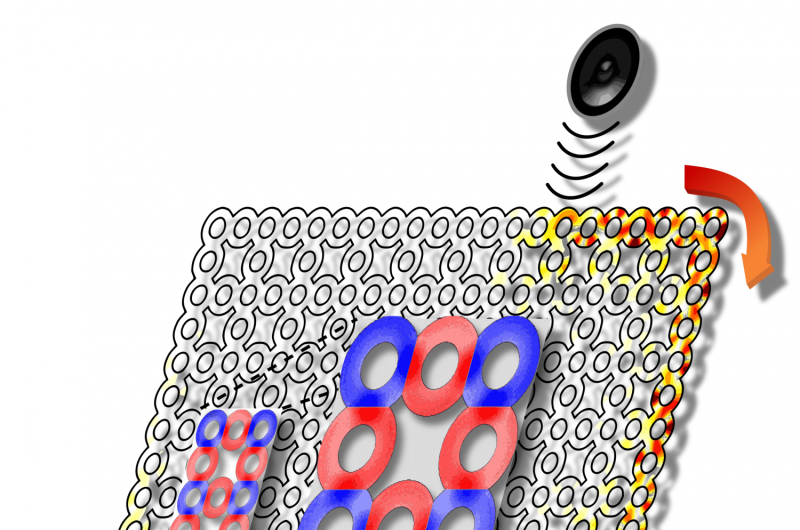Smart design carries sound one way

A new computer simulation shows the promising possibilities of the booming field of topology. Smartly designed mechanical structures carry sound exclusively one way and are immune to fabrication errors. The study has been published in Nature Physics.
Imagine unboxing a freshly purchased headset only to find out that one earphone is slightly damaged. You have every right to send it back – after all, it will never sound as good as new. However, with the help of some fundamental physics, in the future it might be possible to create products that would carry sound perfectly even despite any manufacturing defects. The research group of Leiden physicist Vincenzo Vitelli simulates materials that carry sound only on their surface and in one direction while being immune to damage.
Active fluid
Postdoctoral researcher Anton Souslov shows a visual from his simulation (figure), depicting a structure of rings containing a so-called active fluid—a liquid consisting of self-propelled particles like bacteria or rolling colloids. The system was designed to contain twice as many rings in which the active fluid circles clockwise (red) instead of counterclockwise (blue). This endows the fluid inside with a net clockwise motion, which turns out to have a special effect on how the material carries sound.
Unaffected sound
If you place a boom box next to one of the sides, sound won't propagate through the entire structure. Instead, it will move only along the edges and only in the clockwise direction. The beauty is that any damage, like the dent on the right, does not affect the sound at all. 'This concept could be useful for designing ultrasound equipment that is immune to fabrication errors,' says Souslov. 'Or devices for non-invasive surgery, where you target tumors with high-intensity ultrasound. Other applications could be soundproof walls or even optical fiber, because the principle works just as well for light waves.'
Topology
Physics enthusiasts might recognize the analogy with topological insulators, which insulate on the inside but conduct electric current on the surface. The Leiden design does the same for sound, and also finds its roots at the interface between physics and topology—a booming field that was the subject of the 2016 Physics Nobel Prize. Topological structures remain unaffected by stretching or bending. Only extreme deformations like tearing or gluing change their properties.
More information: Anton Souslov, Benjamin C. van Zuiden, Denis Bartolo and Vincenzo Vitelli, 'Topological sound in active-liquid metamaterials', Nature Physics.
Journal information: Nature Physics
Provided by Leiden Institute of Physics



















